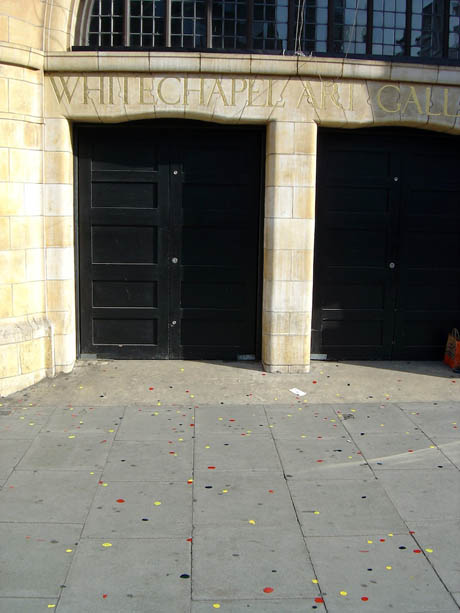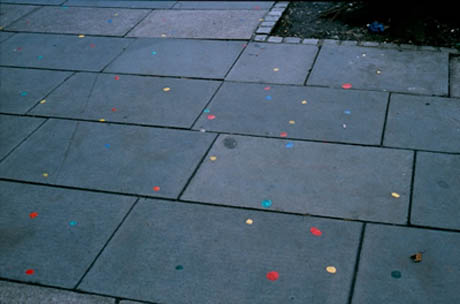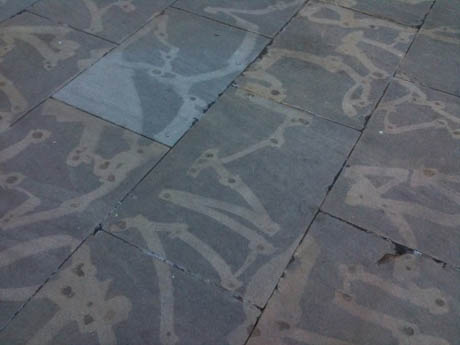One of the downsides of writing about the urban gumscape is that the particular pattern of irregular black dots decorating the pavement at my feet is now almost the only thing I see while walking around the city. One of the upsides is that readers have pointed me toward more fantastic examples of gumscape enhancement, both intentional and inadvertent.
From Jeremy Cherfas, the co-author of the Agricultural Biodiversity Weblog (which regular readers will recognise as an Edible Geography favourite) comes Levin Haegele’s Multicoloured Gum Piece, installed outside the Whitechapel Art Gallery in London, in 2002.

IMAGE: Levin Haegele’s Multicoloured Gum Piece, enamel on found gum, 2002.
Like Ben Wilson, Haegele uses enamel paints to colour gum litter, although his work foregrounds the pavement pattern over the unique qualities of each individual blob. At the same time, his bright red, yellow, and blue colour scheme re-energises the tired charcoal blobs with a reminder of their original burst of artificial bubblegum flavour.

IMAGE: Levin Haegele’s Multicoloured Gum Piece, enamel on found gum, 2002.
Meanwhile, BLDGBLOG‘s Geoff Manaugh sent me over to Sam Jacob’s blog, Strange Harvest, where architect David Knight has curated a mini-exhibition of “inadequate planning,” as an attempt to arrive at “a more gradated understanding of the forces — beyond the preconceived — that shape the built environment.”

IMAGE: Broadgate, City of London, by David Knight, via Strange Harvest.
Among the examples of adaptations, interventions, and accidents that Knight catalogues is this lovely “unintentional public realm collaboration,” in which an army of careless chewers scatter their dead gum onto the Broadgate pavement, and a specialist gum cleaner then uses their jet washer contrail to trace constellations — “human failure transformed into ornament.”

